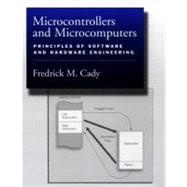
| Preface | |
| Introduction | |
| Computers, Microprocessors, Microcomputers, Microcontrollers | |
| Some Basic Definitions | |
| Notation | |
| Study Plan | |
| The Picoprocessor: An Introduction to Computer Architecture | |
| Introduction | |
| Computer Operation Codes | |
| Basic Computer Hardware | |
| Computer Timing | |
| More Instructions | |
| Control Instructions | |
| The Final Design | |
| Chapter Summary Points | |
| Problems | |
| Introduction to the CPU: Registers and Condition Codes | |
| Introduction | |
| CPU Register | |
| Register Transfers | |
| Your Real Processor's Registers | |
| The Condition Code Register | |
| The Programmer's Model | |
| Chapter Summary Points | |
| Problems | |
| Addressing Modes | |
| Introduction | |
| Addressing Terminology | |
| Memory Architectures | |
| Addressing Modes | |
| Stack Addressing | |
| Chapter Summary Points | |
| Your Own Processor's Addressing Modes | |
| Problems | |
| Assembly Language Programming and Debugging | |
| Introduction | |
| The Assembler | |
| The Code Location Problem | |
| The Linker | |
| The Librarian | |
| The Loader | |
| Assembly-Time, Link-Time, Load-Time, and Run-Time | |
| Your Assembler | |
| The Debugger | |
| Typical Assembly Language Program Bugs | |
| Tricks of the Trade | |
| Chapter Summary Points | |
| Problems | |
| Top-Down Software Design | |
| The Need for Software Design | |
| The Software Tree | |
| The Software Development Process | |
| Top-Down Design | |
| Design Partitioning | |
| Bottom-Up Design | |
| The Real-World Approach | |
| Types of Design Activity | |
| Design Tools | |
| Top-Down Debugging and Testing | |
| Structured Programming in Assembly Language | |
| Modular Design | |
| Interprocess Communication | |
| Software Documentation | |
| Chapter Summary Points | |
| Problems | |
| Computer Buses and Parallel Input/Output | |
| Introduction | |
| The Computer Bus | |
| I/O Addressing | |
| I/O Synchronization | |
| More Bus Ideas | |
| Simple I/O Devices | |
| Programmable I/O Devices | |
| More I/O Ideas | |
| Chapter Summary Points | |
| References and Other Reading | |
| Problems | |
| Interrupts and Real-Time Events | |
| Introduction | |
| Interrupt System Specifications | |
| Asynchronous Events and Internal Processor Timing | |
| Internal CPU Interrupt Hardware | |
| Multiple Sources of Interrupts | |
| Sequential and Nested Interrupts | |
| Simultaneous Interrupts - Priorities | |
| Transferring Control to the Interrupt Service Routine | |
| The Interrupt Service Routine | |
| Interrupt Routine Returns | |
| Other Interrupt Request Signals | |
| Conclusion and Chapter Summary Points | |
| Further Reading | |
| Problems | |
| Computer Memories | |
| Introduction | |
| Computer Types and Memory Maps | |
| Semiconductor RAM | |
| ROM Memory | |
| Memory Timing Requirements | |
| Putting it All Together | |
| Conclusion and Chapter Summary Points | |
| Further Reading | |
| Problems | |
| Serial Input/Output | |
| Introduction | |
| The Components of an Asynchronous Serial Communication System | |
| Standards for the Serial I/O Interface | |
| RS-232-C Interconnections | |
| Standard Electrical Signal Levels | |
| The UART | |
| ASCII Data and Control Codes | |
| Flow Control | |
| Debugging and Trouble Shooting | |
| Chapter Summary Points | |
| Problems | |
| Analog Input and Output | |
| Introduction | |
| Data Acquisition and Conversion | |
| Shannon's Sampling Theorem and Aliasing | |
| Analog-to-Digital Conversion | |
| Digital-to-Analog Conversion | |
| Other Analog I/O Methods | |
| Chapter Summary Points | |
| Further Reading | |
| Problems | |
| Appendix A: Binary Codes | |
| Binary Codes Review | |
| ProblemsSolutions to Chapter Problems | |
| Index | |
| Table of Contents provided by Publisher. All Rights Reserved. |
The New copy of this book will include any supplemental materials advertised. Please check the title of the book to determine if it should include any access cards, study guides, lab manuals, CDs, etc.
The Used, Rental and eBook copies of this book are not guaranteed to include any supplemental materials. Typically, only the book itself is included. This is true even if the title states it includes any access cards, study guides, lab manuals, CDs, etc.